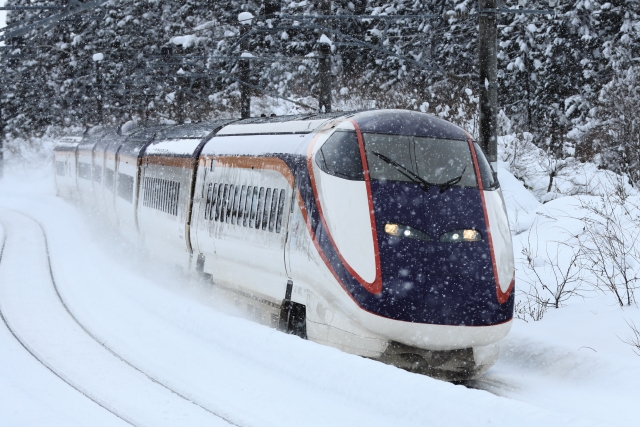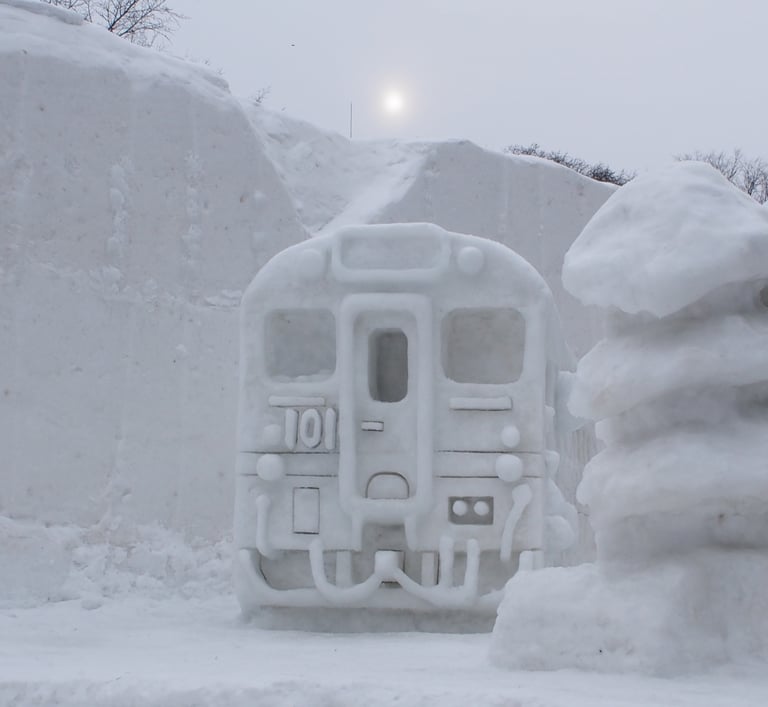Top 5 Places to Visit in Japan in Winter – With Train Access, Pass Coverage & Must-Try Foods
Winter in Japan offers an aesthetic holiday experience like no other—snow-covered mountains, relaxing hot springs, dazzling night illuminations, and seasonal food that warms the soul. Whether you’re planning a ski adventure, a cultural getaway, or simply want to enjoy the quiet beauty of the countryside, Japan has countless destinations perfect for every season—Winter, Summer, Spring, and Fall. Travelers will find that many of these spots are easily accessible by train, making it simple to create a seamless itinerary for your vacation. From charming towns to iconic landmarks, you’ll discover unique things to do, breathtaking destinations, and authentic food experiences. Here are five of the best places to visit in Japan in winter, complete with train access, JR Pass coverage, and local specialties to enjoy along the way.
JR PASS 7 DAYSJR REGIONAL PASSFOODCENTRAL JAPAN
Josh K
9/27/20254 min read
Featured Destinations


1. Sapporo, Hokkaido – Snow Festival & Winter Delicacies
Why Visit:
Sapporo is world-famous for the Sapporo Snow Festival (early February), where giant snow and ice sculptures light up the city. Ski resorts like Niseko and Rusutsu are nearby, making it a winter paradise.
How to Get There by Train:
From Tokyo, take the Tohoku-Hokkaido Shinkansen to Shin-Hakodate-Hokuto (about 4 hours).
Transfer to the Limited Express Hokuto to Sapporo (3.5 hours).
Pass Coverage:
✅ JR Pass fully covers the trip.
✅ JR Hokkaido Rail Pass covers travel within Hokkaido.
Foods to Try:
Sapporo miso ramen topped with sweet corn and butter.
Hokkaido crab (kani), scallops, and uni (sea urchin).
Soup curry, a spicy, warming specialty perfect for cold days.
Also check 👉 Best Family-Friendly Hotels in Sapporo – Top 3 Picks for 2026




Sapporo Odori Park
Sapporo Snow Festival
2. Hida Takayama & Shirakawa-go – Old Town Charm & Snowy Villages
Why Visit:
Hida Takayama is famous for its beautifully preserved old town streets and winter markets. Nearby Shirakawa-go, a UNESCO World Heritage Site, is breathtaking in winter when the traditional gassho-zukuri farmhouses are blanketed in snow and illuminated at night.
How to Get There by Train:
From Tokyo, take the JR Tokaido Shinkansen to Nagoya (1 hr 40 min).
Transfer to the JR Hida Limited Express to Takayama (2.5 hrs).
From Takayama, buses run to Shirakawa-go (50 min).
Pass Coverage:
✅ JR Pass covers Tokyo–Takayama. Bus to Shirakawa-go not included.
✅ JR Takayama-Hokuriku Area Pass covers the whole journey from Osaka/Kyoto/Nagoya to Takayama and Kanazawa, plus buses to Shirakawa-go.
Foods to Try:
Hida beef, one of Japan’s top wagyu varieties.
Gohei mochi, grilled rice cakes coated with miso sauce.
Takayama ramen, a simple soy-based noodle soup.
3. Kanazawa, Ishikawa – Snowy Gardens & Seafood
Why Visit:
Kanazawa is home to Kenrokuen Garden, stunning when blanketed in snow. The historic Higashi Chaya teahouse district also looks magical in winter. Being on the Sea of Japan coast, Kanazawa is a food lover’s paradise in colder months.
How to Get There by Train:
From Tokyo, take the Hokuriku Shinkansen directly to Kanazawa (2.5–3 hours).
Pass Coverage:
✅ JR Pass covers the full trip.
✅ JR Hokuriku Arch Pass covers Tokyo–Kanazawa via Hokuriku Shinkansen.
✅ JR Takayama-Hokuriku Area Pass covers travel between Nagoya/Kyoto/Osaka and Kanazawa.
Foods to Try:
Kani (snow crab), especially from November to March.
Nodoguro (blackthroat seaperch), a prized winter delicacy.
Gold leaf ice cream, a Kanazawa specialty.
4. Nagano – Ski Resorts & Hot Springs
Why Visit:
Nagano hosted the 1998 Winter Olympics and is still one of Japan’s top skiing and snowboarding destinations. The Jigokudani Snow Monkey Park is also a must-see, where monkeys soak in hot springs amid the snow.
How to Get There by Train:
From Tokyo, take the Hokuriku Shinkansen to Nagano (1.5 hours).
For Jigokudani Monkey Park, transfer to the Nagano Dentetsu Line to Yudanaka, then take a bus.
Pass Coverage:
✅ JR Pass covers Tokyo–Nagano on the Shinkansen.
✅ JR East Nagano-Niigata Area Pass also covers Tokyo–Nagano.
Note: Local train/bus to Yudanaka & Jigokudani not covered.
Foods to Try:
Oyaki (stuffed dumplings with seasonal fillings like pumpkin or mushrooms).
Shinshu soba, Nagano’s buckwheat noodles.
Nozawana pickles, a local winter favorite.
5. Kyoto – Winter Temples & Comfort Food
Why Visit:
Kyoto’s temples and shrines are even more enchanting with a light dusting of snow. Winter crowds are much smaller, making it a peaceful time to visit. Illuminations at Kiyomizudera and Arashiyama Bamboo Grove in winter are breathtaking.
How to Get There by Train:
From Tokyo, take the Tokaido Shinkansen to Kyoto (2 hrs 20 min).
Pass Coverage:
✅ JR Pass covers Tokyo–Kyoto on the Hikari and Kodama trains (Nozomi not covered).
✅ JR Kansai Area Pass covers local JR lines in the Kyoto-Osaka-Nara region (not Shinkansen from Tokyo).
Foods to Try:
Yudofu (tofu hot pot), a warming Buddhist-inspired dish.
Nabe (hot pot dishes) like sukiyaki and shabu-shabu.
Kyoto sweets such as warabi mochi and matcha desserts.




Kinkakuji Temple in Kyoto
Togetsukyo Bridge inArashiyama, Kyoto
Looking for a Hotel in Kyoto?
Winter in Japan offers a unique mix of snowy landscapes, festive events, hot springs, and delicious seasonal cuisine. With the efficiency of Japan’s train network, each of these destinations is easily accessible and covered by the JR Pass or specific Regional JR Passes.
So bundle up, grab your rail pass, and get ready to explore the wonders of Japan in winter—one train ride and one delicious dish at a time.
You might also like: Top 5 Places to Visit in Japan This Fall By Train – A Complete Guide for Autumn Lovers
